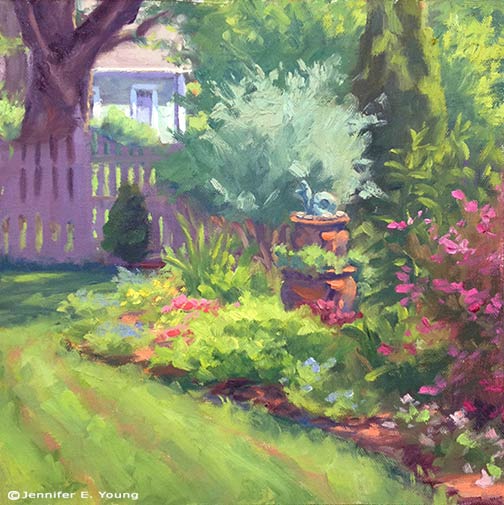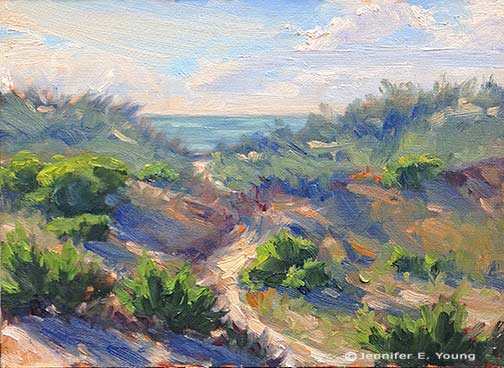Shopping local
/As the title of my blog might imply, one of my passions is to travel and paint the beautiful places I've been. But home commitments these days often don't allow me the time needed to go farther afield for scouting subjects and painting them. Instead of lamenting this fact (which I admit I did for a while) I have decided that if I don't find some options for painting close by I will not get very far with my work (or my sanity!) So I've started shopping local. I really only have a few mornings to myself so I need to get in and out of a place pretty quickly in order to pick up my daughter on time from preschool. The Lewis Ginter Botanical Gardens are close by, and they are a lovely option, as is Bryan Park. But there really are a lot of interesting subjects even closer to my home, in my Bellevue neighborhood and even my very own gardens.
There are a couple of challenges to my place. First of all, I live in an urban neighborhood. While we have tons of gardeners here and lots of green space we also have small lots and lots of large trees. So you have to get used to painting close in, and you're not going to get many sweeping vistas around here, which is the kind of subject matter that I have been most attracted to since I first took up landscape painting.
Secondly, aside from a very brief (but lovely) appearance of sunlight in the early, early morning, a good part of my back yard in particular remains in shadow until about 10:30 or 11 a.m. That means that the most interesting play of light and shadow only makes a presence for an hour, or at most an hour and a half tops, before the shadows shrink up and burn off at high noon.
On the other hand, having planted every shrub and flower, I know my garden intimately and have had plenty of time to observe how the light comes over each bed. So I can set up my easel where I want it, walk back to the studio to do some work there, and then return to my plein air setup at the optimal time when the light is just right. I can work in this way all they way until the time I need to pick up my daughter from preschool (a 5-minute commute), and then just throw my gear into the studio right before I leave to get her. This was my approach for the little plein air below. It's not a big painting, but I still needed to finish this up in two different sessions due to the lighting situation mentioned above:
At home we call this bed "The Bump Out", but I thoughtthat would be a weird title for a painting. At present there is still a sense of order, but in summer it's a lot more colorful, but also a lot more chaotic. ( I really tend to crowd my gardens terribly. This is a bad habit but I'm trying to get better, and not be so afraid to pull things out, give plants away, or just toss them if need be.) The summer flowers are beautiful, but I like it at this time of year too because you can still see the "bones" and underlying form before the wildness ensues.





















